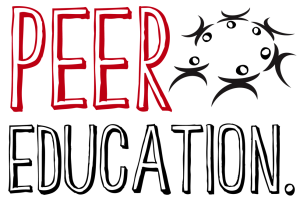Two students from Sachem North’s journalism class, taught by Jon Weston, wrote stories with their thoughts on peer-education at the high school …
-Written by Kevin Lauro
It all started in 2011 for Mr. Chiaramonte, a Sachem North history teacher with a vision. Peer Education was a class for years in Sachem, and he asked to teach the course because of his belief in the values of respect, tolerance, and teaching values to younger kids.
Through a variety of topics and “chapters,” students learn how to accept each other and learn to interact with people.
Peer education truly is unlike any other course. Mr. Chiaramonte often uses inspiring video clips to teach lessons, and then students react and discuss what they saw. It often creates peer-to-peer dialogue and takes the class in various directions.
Some of the more popular lessons shared with classes are titled “The Bag Speech,” “True Selfie,” “Cross the Line,” “Lemons,” and “The Shaving Cream and Toothpaste.”
Here is an explanation of these examples:
The Bag Speech: Students bring in items that represent their past, present, and future. They put the items in a bag so nobody else sees them until they take it out. This was a great way for people to get to know each other because you never know what they could pull out of the bag.
True Selfie: Students had to take an honest picture of themselves (For girls, no makeup was mainly what the honest part meant) and bring it in. Once all of the selfies were posted on the bulletin board in the back of the classroom, they were assigned numbers. Whoever got your number had to write a nice comment about your picture and it made everyone feel a little bit better about themselves.
Cross the Line: Mr. Chiaramonte read a number of different things and we had to cross the line if it applied to us. For example, “Cross the line if you ever felt like you failed your parents.”
Lemons: This is one of the first lessons of the year. Mr. Chiaramonte brought in a bunch of lemons (Weird, right?). First, we had to describe lemons based on what we know about them. After that, we grabbed a partner and got our own lemons and made up a fake story about them. This showed that people often give stereotypes to things before they really understand them.
Shaving Cream & Toothpaste: This is one of the most creative lessons. Students go into groups and take a bottle of shaving cream and a tube of toothpaste and emptied everything, and then Mr. Chiaramonte asked us to put it back in the bottle. It is an absolute struggle. This teaches students that once they do/say something to someone, it’s difficult to go back and fix it.
Peer education is becoming an elective that EVERYONE in Sachem should consider taking.
“It’s mind blowing to me to know that I have five full classes of a class that students chose to take,” said Mr. Chiaramonte. “Not only is that cool, but the fact that it is a course on being kind, working together, and learning about what makes us who we are is even more incredible. Peer educators are leaders.”
“We go together to the social studies classes and inform students who are about to make their schedules what peer education is. They sign up knowing the topics we cover and what our goals are. The future is in better hands with the students from this generation and peer education courses like this get to help that cause just a bit.”
-Written by Makenzie Fier
Sachem North’s peer education class, run by Jonathan Chiaramonte, is a class that teaches students to understand people’s differences and realize that they all have similarities. Through powerful messages and lessons, students can learn to make the community a less judgmental place. The messages can also impact student lives greatly.
When Brendan Lauth, a senior at Sachem North, was asked about some of the powerful messages he has been taught he said, “I’ve learned that you should never judge a book by its cover, because no matter how cliché it sounds, the lesson affects me in my everyday life.”
Chiaramonte has been teaching for 10 years and has been able to connect with students and make them understand a serious concept.
“If people are laughing, they’re comfortable,” he said. “If I can make people laugh and smile, even during a serious topic, I can make them feel welcome to share their opinions.”

